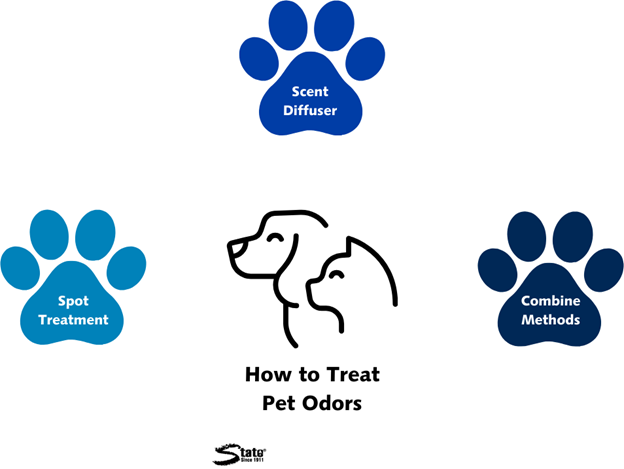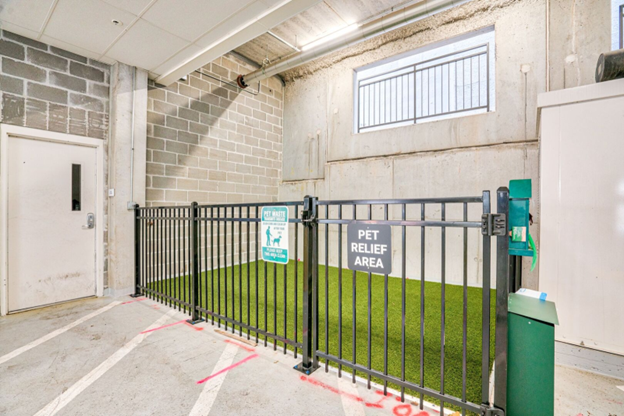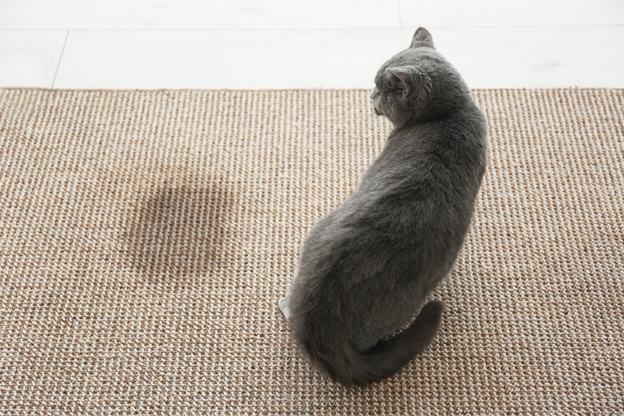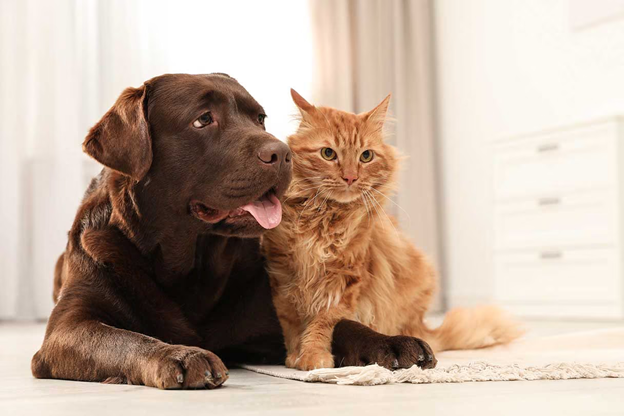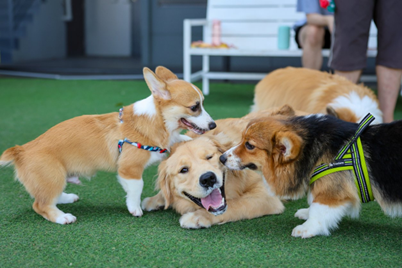How to Get Rid of Pet Odor in My Facility
How to Get Rid of Pet Odor in My Facility
Everyone loves pets, whether they be furry friends, scaly serpents, or feathered fowl. However, no one is a big fan of pet odors. Unfortunately, when you’re running a facility full of animals, the odors of animal dander, pet waste, vomit, and pet food are inevitable. You want your facility to present as professional, but how can you do this when you have these constant odors?
At State Chemical, we manufacture and distribute chemical solutions for various problems, including pet odors. When your facility has constant odors, it can be discouraging and uncomfortable. Still, when there will always be animals around, it sometimes feels like you don’t have any other choice.
To help you treat the pet odors in your facility, we will explain common sources of pet odors, spot treatment, ambient scenting, combining treatment methods, and the overall effect of odor treatment on your facility. After reading, you’ll know how to best eliminate pet odors from your facility.
Causes of Pet Odors
Before treating your pet odors, it’s important to understand where they’re coming from. It’s usually pretty easy to tell when an animal is the source of an odor, but what does this look like?
Suppose you’re the property manager of an apartment with a pet park or pet relief area that uses turf. Here, the odor is likely to come from animal waste drying out and clinging to the turf. Especially in the summer sun, this is going to create foul odors that will deter residents and prospective leasers.
This is a different issue than you’d experience as a mobile dog groomer whose van smells strongly of animal dander and wet dog.
And still, this is not the same as the issues you’d face at an animal shelter, where the entire facility smells like kitty litter, urine, and kibble.
No matter how much you love animal companions, you aren’t going to enjoy these odors, and without a fix, people won’t want to frequent your facility.
Pets have odors that can be relegated both to specific places (e.g., a piece of furniture) and larger areas (e.g., entire buildings). Odors easily permeate a space, so it can sometimes be hard to distinguish whether an odor is in the air or if it’s radiating off a particular object.
Pay close attention to where the odor is most potent to determine where it’s sourced. It may take a few tries, but once you narrow down your issue to either a specific spot or a larger area, you’ll know what kind of treatment to look into.
Spot Treatment for Pet Odors
If you’ve determined that your odors are tied to a specific area or item, you will want to explore spot treatment options.
Spot treatment refers to any handheld, ready-to-use product you apply directly to a specific spot. For example, if a cat vomited on your carpet, you would first try to scrub it out. But if any odors remained, you could use a carpet odor remover spray to treat the affected area and keep the space smelling clean. There are also solutions like this on the market for turf and other surfaces.
These solutions also exist for furniture, fabric, and textiles in the form of fabric refreshers. Let’s say that you work in a veterinary office, and the waiting room smells. At first, you think it’s the whole room, but upon closer inspection, the odors are clinging onto your chairs. Here, you could use a fabric refresher to eliminate these odors and keep the whole room smelling fresh.
When the problem is the space itself, there are also solutions for small rooms in the form of air fresheners and odor eliminators. Imagine that you run an animal shelter with a specific room set aside for people to interact with the animals. Nervous animals sometimes have accidents in this room, and it can smell pretty bad as a result. This is a good time to use an aerosol to quickly eliminate odors in the air and add a pleasant scent to the area.
Observe where your odors are most frequent and most noticeable. This will clue you in as to the problem area. When it’s specific to a small area, use spot treatment. If it stretches beyond that, it’s time to consider automated scent diffusers.
Automated Scent Diffusers for Pet Odors
An automated scent diffuser is a computerized system that regularly releases an odor eliminator and a fragrance into a space. Depending on your chosen system, a scent diffuser may be able to fragrance anything from an elevator to an entire building.
When you have consistent, severe pet odors, you’ll want to consider scent diffusers.
Let’s say that you’re the manager of a doggy daycare. Every day, different dogs cycle in and out, eating and playing and getting into things together. Naturally, this creates odors—of food, waste, fur, dander, saliva, and more. Specific spots may have problems, but with this happening every day, it’s likely that the whole facility smells particularly doggish—and not in a good way.
Here, a scent diffuser could continuously treat the entire space. It would eliminate odors as they arose and leave behind a fresh fragrance throughout the facility. Meanwhile, a handheld method of odor elimination just wouldn’t be able to make enough of a difference. With odors this widespread, you’ll need a solution that also permeates the space.
If your pet odors inhabit the whole facility like this, scent diffusers are likely the solution for you.
Combined Treatment Methods for Pet Odors
If you have severe and persistent pet odors, the most comprehensive solution is often to combine spot treatment and scent diffusers in your facility. Issues are not always mutually exclusive, and you may have multiple problems contributing to a larger one—especially with pets.
Imagine a scenario where you have carpet odors, furniture odors, and facility-wide odors all at once. Spot treatment alone isn’t enough to handle this; a scent diffuser alone isn’t enough to handle this. You’ll need to take a multi-step approach to most effectively combat odors.
Additionally, more severe problem areas may also cause whole-facility issues. Let’s say, for example, that your floors have a cat urine problem. You’ll definitely want to treat this at the source, but the odor is so pungent that you’ll probably also want to treat the whole facility. This will ensure the most effective treatment so that you don’t have to keep enduring malodors.
The Impact of Scenting on Your Facility
When you treat your pet odors, you’ll be looking at a cleaner facility and a happier customer base. Scent has a powerful impact, and it can influence the way your facility is viewed.
People care greatly about their pets' care. If they enter your facility and it smells unhygienic, they may not trust you with their pet. Meanwhile, if they enter and think it smells fresh and looks clean, they will be more likely to view you as professional and reliable.
Scenting and odor elimination are an important part of brand image. When you thoroughly identify and treat your odors, you’ll see higher guest satisfaction and trust in your brand.
Learn More About Ambient Scenting vs. Spot Treatment
Everyone loves pets, but the odors they bring along can be a headache to deal with. Now, you know different odor control methods to keep your facility fresh. Learn more about odor control methods by reading about ambient scenting versus spot treatment.

